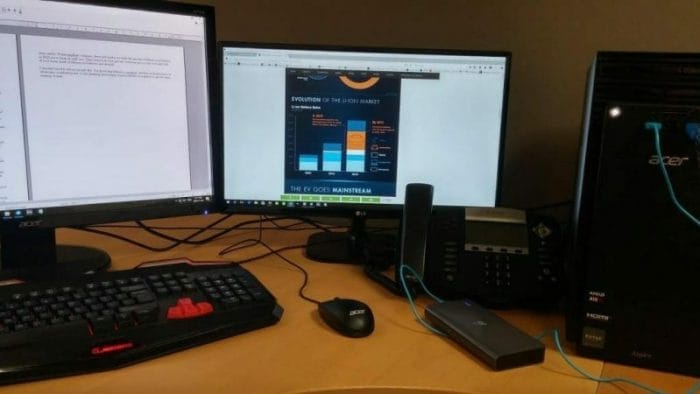Let’s talk lithium.
No, YOU shut up.
For real, what a difference a few months makes. You guys couldn’t get enough of lithium in February, with company after company roping off whatever dried river bed they could get their hands on so they could claim they would be Tesla’s houseboy going forward. Anything Frank Giustra touched was an instant four-bagger. Anything around the Clayton Valley was a billion bucks waiting to happen.
Then the pack moved to the next feeding grounds (weed), and suddenly nobody gave a shit about what Elon Musk was building or how much lithium it would need or who would be in a good position to actually extract it from the earth so that the walls and roof of every new home would be able to store power.
Remember when Pure Energy (PE.V) was over a buck in April? Remember when it was $0.49 in May?
Remember when Lithium-X (LIX.V) was over $2.50 in April? Remember when it was $1.70 in May?
It’s still in the $1.70’s range, even with lithium prices still high, demand surging, and with that company moving forward aggressively on its projects.
Lithium supply and demand didn’t change between April and May of this year, only the perception changed. While the pack was running hard in one direction from November 2015 to April 2016, it just didn’t matter whether a lithium company might move forward on a project or even close an MOU to acquire one. If it had lithium in its name, it charged.
It was, to be sure, bullshit. Not to say lithium isn’t on the ascendancy, just that the ‘we’re all making money, buy everything’ attitude that currently inhabits the weed space has an end date. Then the pack moves on.
Recently we had a shift towards cobalt, which was great news for Cruz Capital (CUZ.V), which had been tying up cobalt properties with alacrity for much of the year, and duly watched its stock climb hard.
But lithium is – again – right where it was when the markets were falling over themselves to invest in its promise.
Consider this factoid, pilfered from the excellent Visual Capitalist battery series: In Q1 of 2016, Tesla sold 2500 Powerwalls, which store energy extracted from solar and wind power in the walls of your home, essentially turning them into huge batteries. It would take 550,000 Powerwalls to store the energy from just one solar farm in California overnight.
When you build a Powerwall, or Tesla’s newly announced solar roof tiles, or the larger battery packs for cellphones that come out every few months, or need to store the power generated from wind turbine farms, or electric vehicles, laptops, power tools, drones, cellphones…
Right now, automobiles make up nearly a third of all lithium demand. That’s up from about 2% five years earlier. If that trend-line continues, there will need to be triple the amount of lithium in production in 2020 just to keep up with cars. That’s before we even get into ‘everyone gets a solar roof’ and walls of your home made of lithium ion batteries and drywall.
Want to have your mind blown? Watch.
BNN’s Scott Simpson wrote just yesterday, “Deutsche Bank envisions huge high-capacity storage battery units revolutionizing electricity grids. These units would give utilities the option to store large volumes of power for peak demand cycles – and lower day-to-day costs by deferring expensive new electricity generation projects.”
We’re not talking room-sized batteries here, we’re talking about block-sized batteries that could ‘store the grid’ when the sun isn’t shining and solar setups aren’t productive. We’re talking so much lithium that you couldn’t build such a thing without driving up prices globally.
Hell, Tesla has already announced the Powerwall II, with twice the capacity of the old one that has barely been for sale long enough to get accurate sales data. You know there’s a third model on the horizon, which will need more and more lithium to operate.
I shouldn’t need to tell you people this. You know that lithium is a-poppin’, and that every new piece of electronics or infrastructure or city planning increasingly requires lithium ion batteries to get the trains running on time.
Here’s a picture of my desk right now, as I write this piece. Let’s count the pieces of electronics that have a lithium component oh that’s right all of it.
The screens, the computer, the phone, the battery pack for my cellphone (unseen, as it was taking the picture), the keyboard and mouse..
Lithium, Jerry. Lithium.
So let’s roll Alix Resources (AIX.V) into this now, because just knowing lithium is going to be up over the next few years isn’t enough, you need to know how to profit from it.
Alix does not have the high profile of Lithium-X. It doesn’t have the Tesla-touching of Pure Energy. It doesn’t have the legacy of Albermarle.
What does it have? Proximity, parts per million, share structure, and cheap stock.
Let’s roll with the first part of that equation. Alix has lithium properties in Ontario (we like), Quebec (friendly, good) and Mexico (nearby, cheap).
Tesla has said it will only deal in North American lithium, and Canada and Mexico qualify. They also have economic advantages, with Quebec being a generous jurisdiction for miners and Mexico being dirt cheap to operate in.
Moving lithium is not hard, so having your pop stand across the street from the Gigafactory isn’t a big deal, and the Clayton Valley, close as it is to Elon’s desk, has raging water issues that make it tough for any player in that area to move forward.
So what’s next? Canada. Mexico.
Let’s get into the parts per million story. Look, I’ll be the first to acknowledge that a lot of lithium guys use parts per million (ppm) to gussy up a paddock. If you found an upside cow skull in a ditch in Flin Flon and it happened to be filled with lithium, your 1 million ppm test might not be considered a reliable measure of what’s actually underground. There are people in this business who have more than 150 ppm of lithium in their ADHD-riddled brains.
But Alix has some properties where the numbers, early as the process of exploring them may be, are actually worth noting.
Their Electra property in Sonora, Mexico, features three concessions, one of which is target-ready, but the other two of which have been sampled aplenty. Community approval and environmental permits for phase one drilling have been received in the last month.
The Tule concession showed sediments returning 347 ppm, 353 ppm and 880 ppm. To the south of that, 950 ppm and 1000 ppm. Now, I’m not going to bust out the knee pads on the Tule just yet, but that’s a solid reason to keep looking deeper.
The Agua Fria concession was found while exploring the Tule, where the company found “lithium-rich clay mineralization tracing along strike for approximately 4.5 km with maximum widths up to 800 m.”
From the company presentation:
Results from 35 additional samples yielded values ranging from 235 to 1,190 ppm Li and averaging 625 ppm Li, with three assay values over 1,000 ppm. The high lithium concentrations display a sequence similar to that found on the nearby La Ventana property held by Bacanora and REM.
If those names don’t ring a bell, Bacanora is a $138 million company. Rare Earth Minerals comes in at a relatively small $30 million.
Alix’s market cap presently? $3 million.
Seem under-priced to you? Well, we haven’t got out of Mexico yet. Let’s take a trip to Ontario, where the Jackpot lithium play near Thunder Bay has a 1956 estimate of 2 Mt @ 1.09 Li2O.
Says the company, “Initial sampling returned multiple samples running greater than 2% Li2O and as high as 2.86% Li2O.“ Back pocket.
Then we have La Corne 2 in Quebec, near Abitibi, “adjacent and on strike with the Chinese-based Jilin Jien Nickel Industry Co.’s lithium property. In September 2016, Alix announced lithium values up to 1.33 wt.% Li20 from it’s preliminary channel sampling of newly discovered spodumene-bearing granitic pegmatite dikes exposed in the southern part of the property.”
Drill permits just showed up and $500k in flow through financing was done to get more work performed. Progress.
To be sure, it will be a long time before one of Alix’s lithium properties is a straight up producer, much as it will with many of the companies that have entered this space since it got hot. If you invest, it shouldn’t be because you think it’ll be a first mover.
Why you’d invest, in my opinion, would be because the company is under-valued, has a tight enough share structure to give it room to finance without blowing out the paper situation, and is in a primo space for future market interest.
They’re geographically diverse, they’re likely to move hard on small volume, and unlike the LIX’s of the world, there’s still a lot of value to be had.
I’m not going to tall you to buy Alix. I don’t do that. But I will say, if you don’t have a stake in the lithium game right now, you run the risk of missing the next wave. Find your flavour and stake it out now.
— Chris Parry
FULL DISCLOSURE: Alix Resources has paid a fee for coverage on Equity.Guru and the author owns stock in the company. Do your due diligence before making any buying or selling decision.



how strong is the leadership and the people behind alix?
It’s a Mike England joint, which means it’ll likely be handed off to new management, JVed, or acquired at some point early stage.
In the meantime:
Christopher Ecclestone, CEO & Director
Mr. Ecclestone is a mining strategist and principal at Hallgarten & Company in London as well as senior European editor at InvestorIntel out of Toronto. He is known for his coverage of specialty metals situations and commentary upon the mining sector. Prior to founding Hallgarten & Company in New York in 2003, he was the head of research at an economic think tank in New Jersey which he joined in 2001. Before moving to the United States, he was the founder and head of research at the esteemed Argentine equity research firm, Buenos Aires Trust Company, from 1991 until 2001. He worked in London from 1985 to 1991 as a corporate finance and equities analyst and as a freelance consultant on the restructuring of the securities industry.